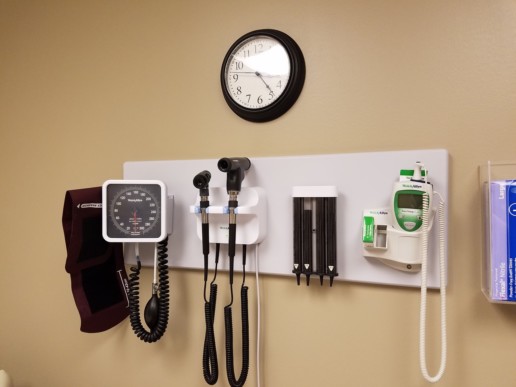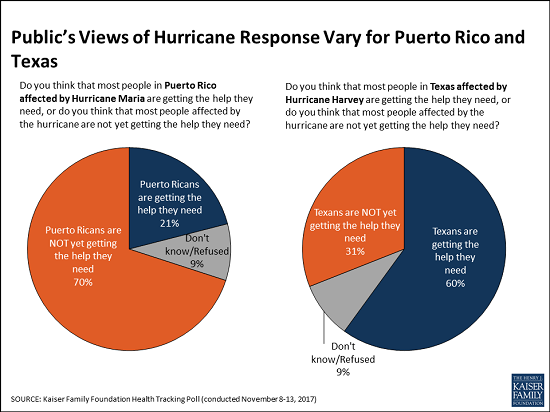3 simple ways to get motivated
Getting and staying motivated can be tough, whether you are coming back from vacation, dealing with something you’d rather avoid or getting focused on a Monday. Not every day will be super productive, and there is no sense in punishing yourself because of it, but there are three great ways to get back on track.
One way is to take the simplest task and make it even simpler. For example, if you have to write an email, then focus on doing the first sentence. Make writing the first sentence your goal. It may feel ridiculously easy, which is the point: Once you write that first sentence, then you will likely have the confidence to begin on the second sentence, and so on.
Another approach is to think about being in bed, tonight, right before you go to sleep. What did you accomplish today? Did you feel good about what got done? What do you wish you had gotten done so you wouldn’t be worried about doing it tomorrow? Now you can stop imagining: It’s wonderful that you still have the day ahead of you and you can get things done now.
Lastly, work on your next task for only five minutes. It will be a focused five minutes, which means no multitasking. Set an alarm as necessary. Chances are that the five minutes will go by quickly and, if you like, you can set the alarm for another five minutes.
Our motivation is usually hampered by either inertia, like when we have taken a break, or by timidity, like when we are intimidated by a major goal. By using these three methods, you can move towards success and focus on the next small step towards your big successful goal.
Read the article.
Source:
Brown D. (21 February 2018). "3 simple ways to get motivated" [Web Blog Post]. Retrieved from address https://workwell.unum.com/2018/02/3-simple-ways-to-get-motivated/
While Talk About Opioids Continues In D.C., Addiction Treatment Is In Peril In States
How is Washington handling the opioid crisis? Let's find out in this article from Kaiser Health News.
Opioids were on the White House agenda Thursday — President Trump convened a summit with members of his administration about the crisis. And Congress authorized funds for the opioid crisis in its recent budget deal — but those dollars aren’t flowing yet, and states say they are struggling to meet the need for treatment.
The Oklahoma agency in charge of substance abuse has been told by the state’s legislature to cut more than $2 million from this fiscal year’s budget.
“Treatment dollars are scarce,” said Randy Tate, president of the Oklahoma Behavioral Health Association, which represents addiction treatment providers.
It’s like dominoes, Tate said. When you cut funding for treatment, other safety-net programs feel the strain.
“Any cuts to our overall contract,” he said, “really diminish our ability to provide the case management necessary to advocate for homes, food, shelter, clothing, primary health care and all the other things that someone needs to really be successful at tackling their addiction.”
In just three years, Oklahoma’s agency in charge of funding opioid treatment has seen more than $27 million dollars chipped away from its budget — thanks to legislative gridlock, slashed state taxes and a drop in oil prices (with the additional loss in state tax revenue that resulted).
Jeff Dismukes, a spokesman for Oklahoma’s Department of Mental Health and Substance Abuse Services, says the already lean agency has few cost-cutting options left.
“We always cut first to administration,” he said, “but there’s a point where you just can’t cut anymore.”
The agency may end up putting off payments to treatment providers until July — the next fiscal year. Tate says that could be devastating.
“Very thinly financed, small rural providers are probably at risk of going out of business entirely — up to and including rural hospitals,” he said.
Getting treatment providers to open up shop in rural areas is really hard, even in good times, and more financial uncertainty could make that problem worse. In the meantime, according to an Oklahoma state commission’s opioid report, just 10 percent of Oklahomans who need addiction treatment are getting it.
That statistic is similar in Colorado. And as 2018 began, Colorado’s escalating opioid crisis got worse, when the state’s largest drug and alcohol treatment provider, Arapahoe House, shut its doors.
The facility provided recovery treatment to 5,000 people a year. Denise Vincioni, who directs another treatment center, the Denver Recovery Group, says other facilities have scrambled to pick up the patients.
Most of Arapahoe’s clients were on Medicaid. Autumn Haggard-Wolfe, a two-time Arapahoe House client who is now in recovery, worries the facility’s closing will have dire consequences, especially for people who need inpatient care, as she did.
“I feel like the only other option right now in therapy would be jail for people,” she said, “and people die in there from withdrawing.”
Arapahoe House’s CEO blamed its closure on the high cost of care and poor government reimbursement for services.
The mother of Colorado state lawmaker Brittany Pettersen struggled with addiction, and was treated at Arapahoe House. Pettersen says treatment centers rely on a crazy quilt of funding sources and are chronically underfunded — often leaving people with no treatment options.
“We have a huge gap in Colorado,” Pettersen said, “and that was before Arapahoe House closed.”
She is pushing legislation in the state to increase funding for treatment. But to get tens of millions of dollars in federal matching funds, Colorado lawmakers need to approve at least $34 million a year in new state spending.
That price tag may simply be too high for some lawmakers. But either way, she added, “It’s going to take a lot to climb out of where we are.”
Colorado did get new federal funds to fight the opioid crisis through the 21st Century Cures Act, passed in December of 2016, but it was just $7.8 million a year for two years — divvied up among a long list of programs.
Read the article.
Source: Daley J.,Fortier J. (5 March 2018). "While Talk About Opioids Continues In D.C., Addiction Treatment Is In Peril In States" [Web Blog Post]. Retrieved from address https://khn.org/news/while-talk-about-opioids-continues-in-dc-addiction-treatment-is-in-peril-in-states/
CenterStage: February is American Heart Month - Are Your Loved Ones Knowledgeable?
Heart disease is the leading cause of death for men and women in the United States. Every year, 1 in 4 deaths are caused by heart disease, according to the American Heart Association.
Talking with your loved ones about heart disease can be awkward, but it’s important. In fact, it could save a life. At the dinner table, in the car, or even via text, have a heart-to-heart with your loved ones about improving heart health as a family. Engaging those you care about in conversations about heart disease prevention can result in heart-healthy behavior changes.

Here are three reasons to talk to the people in your life about heart health and three ways to get the conversation started.
Three Reasons You Should Talk to Your Loved Ones About Heart Health
#1. More than physical health is at risk

Millions of people in the US don’t know that they have high blood pressure. High blood pressure raises the risk for heart attacks, stroke, heart disease, kidney disease and many other health issues. Researchers are learning that having high blood pressure in your late 40s or early 50s can lead to dementia later in life. Encourage family members to be aware of blood pressure levels and monitor them consistently.
#2. Feel Younger Longer

Just as bad living habits can age you prematurely and shorten your lifespan, practicing good heart healthy habits can help you feel younger longer. On average, U.S. adults have hearts that are 7 years older than they should be, according to the Center for Disease Control and Prevention. Just beginning the conversation with the people in your life that you care about can begin to make changes in their heart health.
#3. You Are What You Eat

Even small changes can make a big difference. Prepare healthier versions of your favorite family recipes by making simple ingredient swaps, simply searching the internet is all it usually takes to find an easy ingredient alternative. Find a new
recipe to cook for your family members, or get in the kitchen together and you’ll finish with something delicious and possibly making some new favorite memories as well. When grocery shopping, choose items low in sodium, added sugar, and trans fats, and be sure to stock up on fresh fruits and vegetables.
Three Ways to Start the Conversation
- Encourage family members to make small changes, like using spices to season food instead of salt.
- Motivate your loved ones to incorporate physical activity into every day. Consider a family fitness challenge and compete with each other to see who can achieve the best results.
- Avoid bad habits together. It has been found that smokers are twice as likely to quit if they have a support system. This applies to practicing healthier practices as well. Set goals and start by making small, positive changes, chances are they may have a big difference.
The key to heart health is a healthy lifestyle. It’s important to try to let go of bad habits that increase your risk of heart disease. By setting small, achievable goals and tracking those goals, you can possibly extend your life expectancy a little bit each day.
Heart disease can be prevented by making healthy choices and consciously monitoring health conditions. Making healthy choices a topic of conversation with your family and loved ones is a great way to open the door to healthier practices in all walks of life.
Download the PDF
SaveSaveSaveSaveSaveSave
5 things to know about this year’s flu
The nation is having a Terrible, Horrible, No Good, Very Bad flu season.
Flu is widespread in 46 states, according to reports to the U.S. Centers for Disease Control and Prevention (CDC).
Nationally, as of mid-December, at least 106 people had died from the infectious disease.
In addition, states across the country are reporting higher-than-average flu-related hospitalizations and emergency room visits. Hospitalization rates are highest among people older than 50 and children younger than 5.
In California, which is among the hardest-hit states, the virus struck surprisingly early this season. The state’s warmer temperatures typically mean people are less confined indoors during the winter months. As a result, flu season usually strikes later than in other regions.
Health experts aren’t sure why this season is different.
“We’re seeing the worst of it right now,” said Dr. Randy Bergen, a pediatrician who is leading Kaiser Permanente-Northern California’s anti-flu effort. “We’re really in historic territory, and I just don’t know when it’s going to stop.” (Kaiser Health News, which produces California Healthline, is not affiliated with Kaiser Permanente.)
Here are five things you should know about this flu season:
1. It’s shaping up to be one of the worst in recent years.
The H3N2 influenza A subtype that appears to be most prevalent this year is particularly nasty, with more severe symptoms including fever and body aches. Australia, which U.S. public health officials follow closely in their flu forecasting — in part because their winter is our summer — reported a record-high number of confirmed flu cases in 2017. Another influenza B virus subtype also is circulating, “and that’s no fun, either,” Bergen said.
Flu season in the U.S. typically starts in October and ends in May, peaking between December and February.
2. This season’s flu vaccine is likely to be less effective than in previous years.
U.S. flu experts say they won’t fully know how effective this season’s vaccine is until the it’s over. But Australia’s experience suggests effectiveness was only about 10 percent. In the U.S., it is 40 to 60 percent effective in an average season. Vaccines are less protective if strains are different than predicted and unexpected mutations occur.
3. You should get the flu shot anyway.
Even if it is not a good match to the virus now circulating, the vaccine helps to ease the severity and duration of symptoms if you come down with the flu.
Children are considered highly vulnerable to the disease. Studies show that for children a shot can significantly reduce the risk of dying.
High-dose vaccines are recommended for older people, who also are exceptionally vulnerable to illness, hospitalization and death related to the flu, according to the CDC.
“Some protection is better than no protection,” Bergen said, “but it’s certainly disappointing to have a vaccine that’s just not as effective as we’d like it to be.
Shots may still be available from your doctor or local health clinic, as well as at some chain drugstores. Check the Vaccine Finder website for a location near you.
4. Basic precautions may spare you and your family from days in bed.
As much as possible, avoid people who are sick. Wash your hands frequently and avoid touching your mouth, nose and eyes.
Masks aren’t particularly effective in keeping you from catching the flu, although they may help keep sick people who wear them from spreading their germs further.
If you are sick, cover your cough and stay home from work if you can, Bergen said. Remaining hydrated, eating nutritious foods and exercising can also help strengthen your immune system.
Because elderly people are so vulnerable to the flu, some nursing homes and assisted living facilities may limit visitors and resident activities, depending on the level of illness.
5. Don’t mistake flu symptoms for those of a common cold.
The hallmarks of flu are fever and body aches that accompany cough and congestion, Bergen said.
If you feel as if you’re having trouble breathing, or if your fever can’t be controlled with medication like Tylenol, check with your doctor. It’s even more important for patients to see a doctor if they have a chronic medical condition like diabetes or heart disease, or if they are young or elderly.
Kaiser Permanente doctors now are being advised to prescribe antiviral drugs like Tamiflu — given as a pill or, for kids, an oral suspension — even without a lab test for influenza, Bergen said. According to a report in the Los Angeles Times, however, Tamiflu supplies are running low.
And Bergen cautioned that these medications are only partly effective, reducing the time of illness by just a day or two.
Read the original article.
Source: Kaiser Health News (22 January 2018). "5 things to know about this year’s flu" [Web blog post]. Retrieved from address https://workwell.unum.com/2018/01/5-things-know-years-flu/
Level-funded plan uptake trickling down market
What are level-funded plans, and why are they becoming so popular? Allow this article to break down the facts for you.
A brighter light is being cast on level-funded group health plans as benefits decision-makers tackle open-enrollment season. Several industry observers say the trend is more pronounced given that the Affordable Care Act remains largely intact — for now.
There has been an ebb and flow to these self-insured underwritten plans over the past 18 months, says Michael Levin, CEO and co-founder of the healthcare data services firm Vericred. But with a fixed monthly rate for more predictability, he says they can drive 25% to 35% savings relative to fully-insured ACA plans that must comply with the medical loss ratio for a certain segment of the market.
Level funding typically leverages an aggregate and/or specific stop-loss product to cap exposure to catastrophic claims. These plans are offered by an independent third-party administrator or health insurance carrier through an administrative-services-only contract.
It’s best suited for companies with a very low risk profile comprised of young or healthy populations, according to Levin. And with low attachment, stop-loss coverage in most states, he explains that the plans have “very little downside risk from the group’s perspective.” Two exceptions are California and New York whose constraints on the stop-loss attachment point “essentially preclude level-funded plans from being offered” there, he adds.
The arrangement is trickling down market. “We’ve heard from carriers that will go down to seven employees, plus dependents, while others cut it off at 20 or 25,” he says.
David Reid, CEO of EaseCentral, sees a “resurgence of level funding” across more than 38,000 employers with less than 500 lives that his SaaS platform targets through about 6,000 health insurance brokers and 1,000 agencies. His average group is about 30 employees.
He’s also seeing more customers using individual-market plans rather than group coverage through Hixme’s digital healthcare benefits consulting platform. Under this approach, health plans are bundled with other specific types of insurance and financing as a line of credit to fill coverage gaps. Employer contributions are earmarked for individual-market plans, which are purchased through payroll deduction.
Read further.
Source: Shutan B. (17 November 2017). "Level-funded plan uptake trickling down market" [Web Blog Post]. Retrieved from address https://www.employeebenefitadviser.com/news/level-funded-plan-uptake-trickling-down-market?feed=00000152-175e-d933-a573-ff5ef1df0000
Top 10 Corporate Wellness Habits to Adopt During 2018
With the New Year in full swing, you may be considering how to turn your life around for the better - drop pounds, kill unhealthy chocolate addictions, quit binging every Netflix season ever, etc... But what about making lasting habits within the workplace?
Too often, we make a list of resolutions, and we forget where we spend most our time. Work is work, but that doesn’t mean we can’t implement some of the changes we make in our personal lives in the workplace, as well.
Today, we thought we’d offer up 10 different ideas for employers (or for employees to offer to their boss) to try and implement within the workplace – from wellness challenges to recess. Try one, combine a few, or do them all! The best part about making resolutions is making them unique to yourself and your company. So, don’t be afraid to get creative!
-
Offer healthy alternatives to traditional junk food items
Just a simple switch of snack foods in the office can cut unnecessary calories! Snacking on healthy items can make mindless snacking not so bad.

-
Offer standing desks
This easy switch will be one of the new year’s trendiest wellness tactics. Select desk options that allow users to easily switch between standing and sitting while working to allow for better blood flow throughout the day.

-
Try a wellness challenge
There’s nothing like some healthy interoffice competition to get people motivated. Select a wellness challenge that is easy and effortless to incorporate into your workplace. This could be a monthly or a weekly challenge, switch it up each month/week to keep things interesting!

-
On-site yoga classes
Another wellness trend that will continue into 2018 is managing stress through yoga. Mindfulness and meditation offer a slew of benefits to help employees relieve stress. Invite an instructor to your office every couple of weeks to guide the team through a yoga class.
-
Celebrate “Wellness Wednesday”
Make hump day something to celebrate and begin to tackle wellness in the office in a manageable way. One day a week can be a gateway to a much healthier lifestyle.

-
Listen to your employees
Survey employees to find out what is working and what isn’t instead of wasting time and energy on things that aren’t engaging your employee population. Use a site like Survey Monkey or Google Forms to create a survey to collect feedback from employees.

-
Participate in a 5K or other group fitness activities
Find a 5K in your community or choose another group fitness activity and cover the entry fee for anyone choosing to participate.
-
Post signs near elevators and escalators encouraging employees to take the stairs instead
Sometimes just seeing this reminder is all the motivation needed to be a little more active!
-
Schedule recess
Pick a 15-minute time of the afternoon for everyone to get away from his or her desk. Go outside, socialize with each other and enjoy some fresh air! Taking walks has also been shown to increase creativity.

-
Reward volunteers
Pay your employees for any volunteer hours up to a certain amount or allot a certain amount of time each month for employees to get away from their desk and get active in the community. Ideas include volunteering at a local food bank or cleaning up a local park, beach, or trail. You’ll benefits from both team building and group physical exercise!
Give one or more of these ideas a try and if they work out for you, let us know! The important lesson here is to remember your work-life is just as important to better as your personal life. When it comes to New Year Resolutions, make sure they encompass every aspect of your life and definitely don’t forget to include your employees in your thoughts.
Stay healthy, have fun, and Happy New Year!
No mat needed: Yoga at your desk
A sticky mat seems de rigueur for modern-day yogis, but that doesn’t mean a long piece of rubber is required to take part in the ancient practice.
Yoga first and foremost is about being present, and it starts with attentive breathing. You can do that anywhere and without props.
Once you’ve got the hang of steady breathing, matching inhales and exhales to movements helps your body relieve tension and your muscles wake up. In fact, the key to the physical practice of yoga is matching conscious breath to movement. It’s also a big part of what makes yoga feel great. Without it, you’d be doing calisthenics.
We’ve rounded up a few yoga exercises you can do easily and safely at work. All require standing – good news, given sitting is pretty bad for us. It’s best to do them with your feet flat on the ground.
Stand with your feet hip-distance apart. Inhale as you bring your arms overhead. Keep your chin level with the ground. Exhale as you soften your knees and twist your torso to the right, letting your head follow and dropping your arms to shoulder-height. Inhale as you turn back to center, lifting your arms overhead. Do the twist to the left. Repeat this pattern several times.
Benefits: Strengthens abdominal muscles, shoulders and upper arms. Stretches back and chest. Lubricates joints of the spine, including in the neck, and shoulders.
Chair
Stand with your feet hip-distance apart, arms at your sides. Inhale as you lift the crown of your head. Exhale as you bend your knees (typically you want to track each knee over the middle of its corresponding foot), like you’re sitting back in a chair. Hinge at your hips, tilting your torso forward up to 45 degrees. Lift your arms to a comfortable height. Inhale as you return to standing, crown lifted, arms lengthening down. Repeat several times.
Benefits: Strengthens front thighs, buttocks, core, upper back and upper arms. Stretches calves and side torso. Lengthens spine. Lubricates joints of the ankles, knees, hips and shoulders.
Triangle
Stand with your feet slightly wider than hip-distance apart, toes pointing same direction as your chest, then turn your right foot 90 degrees to the right, and your left foot about 15 degrees to the right, making sure your left toes point the same direction as your left knee. Inhale as you extend your arms out from the shoulders and lengthen your spine. Exhale as you tilt your torso to the right, releasing your right arm toward your right leg and your left arm up to a comfortable height. Don’t turn your chest toward your right leg. Drop your gaze to the ground if you feel tension in your neck. Hold for several breaths, and repeat with the left leg.
Benefits: Strengthens front thighs, buttocks, side torso and neck. Stretches calves, back thighs and side torso. Lubricates joints of the hips and shoulders.
You can read the original article here.
Source:
Malek M. (2 May 2017). "No mat needed: Yoga at your desk" [Web blog post]. Retrieved from address https://worklife.coloniallife.com/2017/05/no-mat-needed-yoga-desk/?utm_sq=flegx3i374&utm_source=Twitter&utm_medium=social&utm_campaign=WorkLifeTweets&utm_content=Articles
Two Months After Hurricane Maria, A Growing Majority Of Americans Say Puerto Ricans are Not Yet Getting the Help They Need
Two months after Hurricane Maria struck Puerto Rico, a growing majority of Americans say that Puerto Ricans affected by the devastating storm are not yet getting the help they need, the November Kaiser Family Foundation Tracking Poll finds.
This month, 70 percent of the public say that people in Puerto Rico are not yet getting the help they need, up from 62 percent in October 2017. These perceptions vary by party, and half of Republicans (52%) now say Puerto Ricans aren’t yet getting needed help, up significantly from October (38%).
When asked whether the federal government is doing enough to restore electricity and access to food and water in Puerto Rico or not, a majority of the public (59%) says the federal government is not doing enough, up from 52 percent in October. Most Democrats (86%) and independents (59%) say the federal government is not doing enough, but most Republicans (63%) say it is doing enough.
In contrast, Americans see the recovery efforts in Texas following Hurricane Harvey in late August progressing more positively. Most (60%) of the public says Texans are getting the help they need, twice the share (31%) who say Texans aren’t yet getting needed help.
The poll finds similar shares of Americans they are closely following news about recovery efforts in Puerto Rico (63%) and in Texas (58%). Democrats are somewhat more likely to report closely following news about the Puerto Rico recovery (75%) than are independents (61%) and Republicans (54%). In contrast, there are no partisan differences for those following news about Texas.
Designed and analyzed by public opinion researchers at the Kaiser Family Foundation, the poll was conducted from November 8 – 13, 2017 among a nationally representative random digit dial telephone sample of 1,201 adults. Interviews were conducted in English and Spanish by landline (415) and cell phone (786). The margin of sampling error is plus or minus 3 percentage points for the full sample. For results based on subgroups, the margin of sampling error may be higher.
You can read the original article here.
Source:
Kaiser Family Foundation (20 November 2017). "Two Months After Hurricane Maria, A Growing Majority Of Americans Say Puerto Ricans are Not Yet Getting the Help They Need" [Web blog post]. Retrieved from address https://www.kff.org/other/press-release/poll-two-months-after-hurricane-maria-a-growing-majority-of-americans-say-puerto-ricans-are-not-ye-getting-the-help-they-need/
SaveSave
How employers can better support the caregivers in their workforces
How can you provide the best support for the caregivers in your workforce? From Employee Benefit News, this article discusses the responsibilities caregiving employees juggle, and why it's so important for employers to take those responsibilities into consideration when creating a healthy and stable work environment.
As more employees self-identify as caregivers for family members and friends, employers are starting to address the needs of workers who struggle to balance work while caring for others.
The numbers are staggering. One in six U.S. employees identify as a caregiver for a family member or friend, according to research by Family Caregiver Alliance. An AARP study found that U.S. businesses lose more than $25 billion annually in lost productivity due to absenteeism among full-time working caregivers, and that figure grows an additional $3 billion when part-time workers with caregiving duties are accounted for.
“Of today’s 40 million family caregivers, 24 million are juggling caregiving responsibilities and employment. By recognizing and supporting their needs, employers can improve productivity and foster a stable and healthy workforce,” says Nancy LeaMond, chief advocacy and engagement officer for AARP.

With that in mind, Northeast Business Group on Health and AARP have released a resource guide for employers who wish to ease the burden of the caregivers among their workforce. According to Supporting Caregivers in the Workplace: A Practical Guide for Employers, the authors recommend that employers create a corporate culture of awareness, draft workplace policies, benefits and programs, obtain the support of top executives and implement new services throughout the work force.
The guide also suggests employers offer paid sick days that can also be used for the care of a relative; in-house stress-reduction programs such as yoga, meditation; massage discounts and online or in-person coaching to assist in developing a care plan. Employers are also urged to offer digital tools to help employees manage their caregiving duties and provide legal and financial counseling for employees.
Employees who are preoccupied with the care and wellbeing of a parent, sibling or child have an impact on the workplace in both their quality of work and in potential medical claims.
“Trying to balance those responsibilities however large or small does have ramifications for the folks who are doing the caregiving,” says Candace Sherman, interim CEO of NEBGH. She says caregivers often feel lonely and isolated due to the demands placed on them and they often experience depression and anxiety when dealing with their caregiving roles.
“They're often spending their outside-of-work time providing care as opposed to socializing and oftentimes they neglect their own mental and physical well-being in favor of making sure that whomever they're caring for has what they need,” says Sherman. “Ultimately, that shows up in healthcare claims down the road.”
Fighting the stigma
By creating a culture of awareness around caregiver needs and responsibilities, employers may shake the resistance employees feel when identifying as caregivers.
“We found that there's a bit of a stigma in terms of folks raising their hand and saying ‘I'm a caregiver and I'm having some trouble,’” says Sherman. She adds that this impulse is similar to employees’ overall reluctance to admitting that they have a mental health issue.
“Employee caregivers might worry that if their colleagues know they're caring for someone, their manager will think ‘I've got this great new assignment but this person's overburdened right now,’” she says. “Or maybe they're up for a promotion and they feel they won't be considered because people know that they have other responsibilities outside of work.”
The caregiving guide recommends employers “ensure that managers at all levels are aware of the company’s policies regarding flex-time, leave policies and other benefits that caregiving employees can access, and should encourage them to openly support employees using these benefits.”
The guide also recommends that providing paid leave to these employees “might be the single most important consideration for employers when thinking about creating a caregiving-friendly workplace.”
Benefit administrators appear to be getting the message. Respondents of a July 2017 survey of benefits executives and managers from roughly 130 companies said that if they could roll out “two new policies, programs or benefits tomorrow to support caregivers, they would expand leave policies and coaching, wellness or support services designed to support caregiver well-being.”
The burden is not just on employers to act to improve the workplace for caregivers, they have to come to terms with their duties and the impact it has on their personal and work lives, says Sherman. Caregivers are slow to identify themselves as such because of cultural and societal roles that engrain our sense of family responsibilities.
“We have all been there or we’re close to people who have been there in terms of caring for someone who's ill or elderly. We are ingrained to view it as we're caring people and this is just something that we do, so people don't self-identify as caregivers,” Sherman says.
She adds, “But if you're a caregiver and you're balancing those responsibilities, they can range from checking in with a family member a couple of times a week or making a run for groceries or medications to much more intensive duties that occupy several hours a day.”
You can read the original article here.
Source:
Albinus P. (5 November 2017). "How employers can better support the caregivers in their workforces" [Web Blog Post]. Retrieved from address https://www.benefitnews.com/news/how-to-meet-the-needs-of-caregiver-employees?feed=00000152-18a5-d58e-ad5a-99fd665c0000
New Regulations Broadening Employer Exemptions to Contraceptive Coverage: Impact on Women
If you're female, contraception coverage is a vital part of your needs. However, women's health care has had many changes to it this month. In this article - originally posted by Kaiser Family Foundation - we take a look at the latest regulations to your and your employer's access to contraceptive coverage. Take a look at how the Trump Administration's new regulations broaden your employer's ability to be exempt from the Affordable Care Act's (ACA's) contraceptive coverage requirement.
You can read the original article here.
Source:
Sobel L., Salganicoff A., Rosenzweig C. (6 October 2017). "New Regulations Broadening Employer Exemptions to Contraceptive Coverage: Impact on Women" [Web Blog Post]. Retrieved from address https://www.kff.org/womens-health-policy/issue-brief/new-regulations-broadening-employer-exemptions-to-contraceptive-coverage-impact-on-women/
The Trump Administration has issued new regulations that significantly broaden employers’ ability to be exempt from the Affordable Care Act’s (ACA) contraceptive coverage requirement. The regulation opens the door for any employer or college/ university with a student health plan with objections to contraceptive coverage based on religious beliefs to qualify for an exemption. Any nonprofit or closely-held for-profit employer with moral objections to contraceptive coverage also qualifies for an exemption. Their female employees, dependents and students will no longer be entitled to coverage for the full range of FDA approved contraceptives at no cost.
On October 6, 2017, the Trump Administration issued two new regulations greatly expanding the types of employers that may be exempt from the Affordable Care Act’s (ACA) contraceptive coverage requirement. These regulations are a significant departure from the Obama-era regulations that only granted an exception to houses of worship. One of the regulations allows nonprofits or for-profit employer with an objection to contraceptive coverage based on religious beliefs to qualify for an exemption and drop contraceptive coverage from their plans. The other regulation also exempts all but publicly traded employers with moral objections to contraception from rule. These new policies, effective immediately, also apply to private institutions of higher education that issue student health plans. The immediate impact of these regulations on the number of women who are eligible for contraceptive coverage is unknown, but the new regulations open the door for many more employers to withhold contraceptive coverage from their plans.
Contraceptive coverage under the ACA has made access to the full range of contraceptive methods affordable to millions of women. This provision is part of a set of key preventive services that has been identified by the Health Resources and Services Administration (HRSA) for women that must be covered without cost-sharing. Since it was first issued in 2012, the contraceptive coverage provision has been controversial. While very popular with the public, with over 77% of women and 64% of men reporting support for no-cost contraceptive coverage, it has been the focus of litigation brought by religious employers, with two cases (Zubik v Burwell and Burwell v Hobby Lobby) reaching the Supreme Court. This brief explains the contraceptive coverage rule under the ACA, the impact it has had on coverage, and how the new regulations issued by the Trump Administration change the contraceptive coverage requirement for employers and affect women’s coverage.
How do the new regulations change contraceptive coverage requirements for employers?
Since they were announced in 2011, the contraceptive coverage rules have evolved through litigation and new regulations. Most employers were required to include the coverage in their plans. Houses of worship could choose to be exempt from the requirement if they had religious objections. This exception meant that women workers and female dependents of exempt employers did not have guaranteed coverage for either some or all FDA approved contraceptive methods if their employer had an objection. Religiously affiliated nonprofits and closely held for-profit corporations were not eligible for an exemption, but could choose an accommodation. This option was offered to religiously affiliated nonprofit employers and then extended to closely held for-profitsafter the Supreme Court ruling in Burwell v. Hobby Lobby. The accommodation allowed these employers to opt out of providing and paying for contraceptive coverage in their plans by either notifying their insurer, third party administrator, or the federal government of their objection. The insurers were then responsible for covering the costs of contraception, which assured that their workers and dependents had contraceptive coverage while relieving the employers of the requirement to pay for it.
As of 2015, 10% of nonprofits with 5,000 or more employees had elected for an accommodation without challenging the requirement. This approach, however, has not been acceptable to all nonprofits with religious objections.1 In May 2016, the Supreme Court remanded Zubik v. Burwell, sending seven cases brought by religious nonprofits objecting to the contraceptive coverage accommodation back to the respective district Courts of Appeal. The Supreme Court instructed the parties to work together to “arrive at an approach going forward that accommodates petitioners’ religious exercise while at the same time ensuring that women covered by petitioners’ health plans receive full and equal health coverage, including contraceptive coverage.”2
On October 6, 2017, the Trump Administration issued new regulations greatly expanding eligibility for the exemption to all nonprofit and closely-held for-profit employers with objections to contraceptive coverage based on religious beliefs or moral convictions, including private institutions of higher education that issue student health plans (Figure 1). In addition, publicly traded for-profit companies with objections based on religious beliefs also qualify for an exemption. There is no guaranteed right of contraceptive coverage for their female employees and dependents or students. Table 1 presents the changes to the contraceptive coverage rule from the Obama Administration in the new Interim Final regulations issued by the Trump Administration.
Figure 1: Employers Objecting to Contraceptive Coverage: Exemptions and Accommodations Under the Trump Administration Regulations
The accommodation will be available to employers that previously qualified for the accommodation. They now will also have the choice of an exemption. The federal departments issuing the regulations posit that these new rules will have limited impact on the number of women losing contraceptive coverage. However, it is not clear how many employers previously utilizing the accommodation will now opt for an exemption, resulting in the loss of contraceptive coverage for their employees and dependents. In addition, there are also an unknown number of organizations that were not previously eligible for either the accommodation or exemption that may now opt for an exemption. These new regulations create two new categories of employers who can now qualify for an exemption or can voluntarily chooses an accommodation: 1) publicly traded for-profit companies with a religious objection and 2) nonprofit and closely held for-profit employers who have a moral objection to contraceptives, a considerably larger pool of employers than when the exemption was available only to those who were employees of a house of worship or who were eligible for an accommodation in the past.
| Table 1: Summary of Changes in the Contraceptive Coverage Regulations for Objecting Entities | ||
| Obama Administration August 2012 to October 5, 2017 |
Trump Administration Effective October 6, 2017 |
|
| What types of contraceptives must plans cover without cost-sharing? | At least one of each of the 18 FDA approved contraceptive methods for women, as prescribed, along with counseling and related services must be covered without cost-sharing. | No change |
| Are any employers “exempt” from the contraceptive mandate? |
|
|
| Who pays for contraceptive coverage for employees of organizations receiving an exemption? |
|
No change |
What type of employers may seek an “accommodation” to avoid paying for contraceptives in their plans? |
|
|
| Who pays for contraceptive coverage for employees of organizations receiving an accommodation? |
|
No change |
| When can entities change from an accommodation to an exemption? | N/A |
|
How has the contraceptive coverage rule affected women?
Contraceptive use among women is widespread, with over 99% of sexually-active women using at least one method at some point during their lifetime.3 Contraceptives make up an estimated 30-44% of out-of-pocket health care spending for women.4 Since the implementation of the ACA, out-of-pocket spending on prescription drugs has decreased dramatically (Figure 2). The majority of this decline (63%) can be attributed to the drop in out-of-pocket expenses on the oral contraceptive pill for women.5 One study estimates that roughly $1.4 billion dollars per year in out-of-pocket savings on the pill resulted from the ACA’s contraceptive mandate.6 By 2013, most women had no out-of-pocket costs for their contraception, as median expenses for most contraceptive methods, including the IUD and the pill, dropped to zero.7
Figure 2: The Contraceptive Coverage Policy Has Had a Large Impact on Out-Of-Pocket Spending in a Short Amount of Time
This provision has also influenced the decisions women make in their choice of method. After implementation of the ACA contraceptive coverage requirement, women were more likely to choose any method of prescription contraceptive, with a shift towards more effective long-term methods.8 High upfront costs of long-acting methods, such as the IUD and implant, had been a barrier to women who might otherwise prefer these more effective methods. When faced with no cost-sharing, women choose these methods more often9, with significant implications for the rate of unintended pregnancy and associated costs of childbirth.10
Finally, decreases in cost-sharing were associated with better adherence and more consistent use of the pill. This was especially true among users of generic pills. One study showed that even copayments as low as $6 were associated with higher levels of discontinuation and non-adherence,11 increasing the risk of unintended pregnancy.
Do states with no-cost contraceptive coverage laws allow exemptions to objecting entities?
The federal standards under Affordable Care Act created a minimum set of preventive benefits that applied to most health plans regulated by the federal government (self-funded plans, federal employee plans) and states (individual, small and large group plans), including contraceptive coverage for women with no cost-sharing. States have also historically regulated insurance, and many have had mandated minimum benefits for decades. State laws, however, have more limited reach in that they only apply to state regulated fully insured plans, do not have jurisdiction over self-funded plans, where 61% of covered workers are insured.12 In self-funded plans, the employer assumes the risk of providing covered services and usually contracts with a third party administrator (TPA) to manage the claims payment process. These plans are overseen by the Federal Department of Labor under the Employer Retirement Income Security Act (ERISA) and are only subject to federally established regulations.13 The ACA sets a minimum standard of coverage for preventive services for all plans. However, state laws regulating insurance, including contraceptive coverage, can require fully insured plans to provide coverage beyond the federal standards.
Eight states have strengthened and expanded the federal contraceptive coverage requirement (CA, IL, MD, ME, NV, NY, OR, VT). Another 20 states have contraceptive equity laws that require plans to cover contraceptives if they also provide coverage for prescription drugs but they do not necessarily require coverage of all FDA-approved contraceptives or ban cost-sharing (Figure 3).
Many of the 28 states that have passed contraceptive coverage laws (both equity and no-cost coverage) have a provision for exemptions, but the laws vary from state to state and only apply to fully insured plans. This means that there may be a conflict between the state and federal requirements when it comes to religious exemptions. In some states with a contraceptive coverage requirement, some employers who are eligible for an exemption under federal law will not qualify for an exemption under state law (Table 2). Employers in those states will have to have to meet the standards established by their state even though they may qualify for an exemption based on the new federal regulations. This conflict may set the stage for future litigation.
| Table 2: State Requirements for No-Cost Contraceptive Coverage | |||||||
| StateDate Effective | Applies to | Coverage required without cost sharing | Exemptions allowed | ||||
| Private plans | Medicaid | With RX all FDA approved | OTC | Vasectomy | Religious | Moral | |
| CaliforniaJanuary 2015 | X | MCOs | X | Narrowly defined nonprofit religious employers | None | ||
| IllinoisJanuary 2017 | X | X | X except male condoms |
Any employer, or insurer with a religious objection | Any employer, or insurer with a moral objection | ||
| MarylandJanuary 2018 | X | X | X | X | X | Religious organizations if the coverage conflicts with the organization’s bona fide religious beliefs and practices | None |
| MaineJanuary 2019 | X | X | Narrowly defined nonprofit religious employers | None | |||
| NevadaJanuary 2018 | X | X | X | Insurers affiliated with a religious organization | None | ||
| New YorkAugust 2017 | X | X | Narrowly defined nonprofit religious employers* | None | |||
| OregonAugust 2017 | X | X | X | Narrowly defined nonprofit religious employers | None | ||
| VermontOctober 2016 | X | X – and all other public health assistance programs | X | X | None | None | |
| NOTES: *Requires the insurer to offer a rider to policyholders so that women will have contraceptive coverage. SOURCE: Kaiser Family Foundation analysis of state laws and regulations. |
|||||||
Conclusion
The Trump Administration’s new regulations substantially expand the exemption to nonprofit and for-profit employers, as well as to private colleges or universities with religious or moral objections to contraceptive coverage. It is unknown how many of these employers and colleges will maintain coverage through the accommodation as before and how many will now opt for the exemption leaving their students, employees and dependents without no-cost coverage for the full range of contraceptive methods. As a result of the new regulation, choices about coverage and cost-sharing will be made by employers and private colleges and universities that issue student plans. For many women, their employers will determine whether they have no-cost coverage to the full range of FDA approved methods. Their choice of contraceptive methods may again be limited by cost, placing some of the most effective yet costly methods out of financial reach.
You can read the original article here.
Source:
Sobel L., Salganicoff A., Rosenzweig C. (6 October 2017). "New Regulations Broadening Employer Exemptions to Contraceptive Coverage: Impact on Women" [Web Blog Post]. Retrieved from address https://www.kff.org/womens-health-policy/issue-brief/new-regulations-broadening-employer-exemptions-to-contraceptive-coverage-impact-on-women/
















